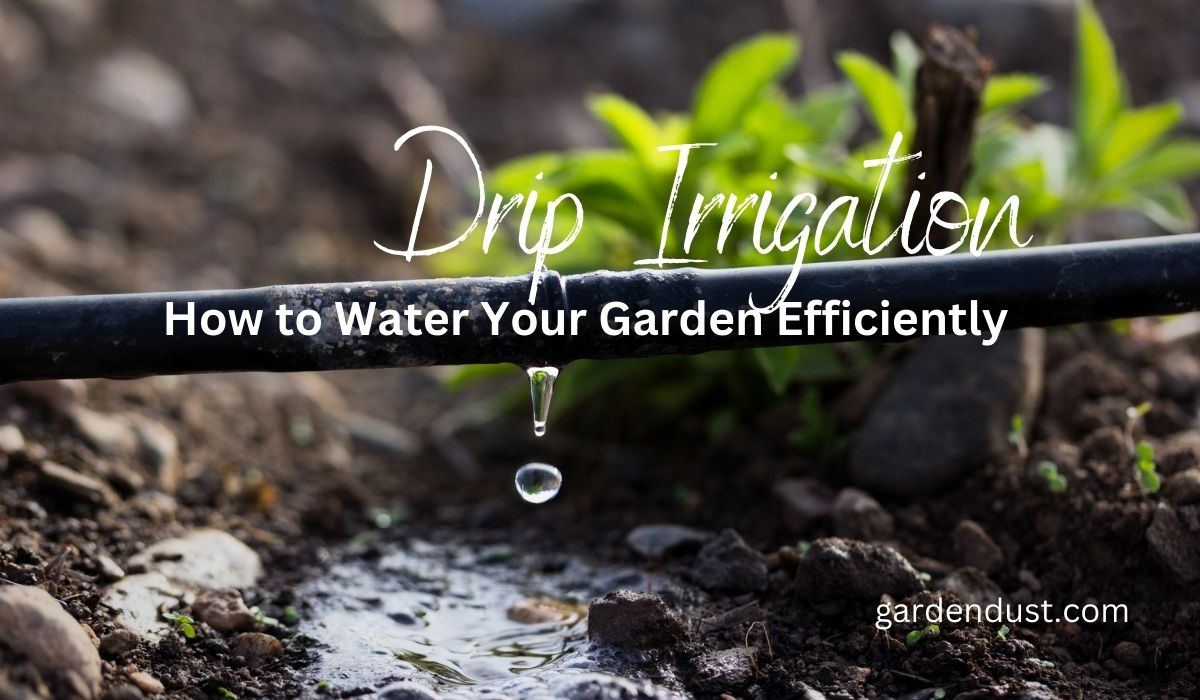When it comes to maintaining a garden, one of the most critical aspects is providing adequate water to your plants. However, this can be a challenging task, especially if you have a large garden or live in an area with limited water resources. That’s where drip irrigation comes in – a technique that can make watering your garden much more efficient and effective.
Drip irrigation is a method of delivering water directly to the roots of your plants, using a network of pipes or hoses with small emitters or drippers spaced along their length. Unlike traditional irrigation methods such as sprinklers, drip irrigation delivers water slowly and directly to the soil, minimizing water waste and reducing the risk of overwatering your plants.
Here are some of the benefits of drip irrigation, and how you can use it to water your garden efficiently.
Saves Water
One of the most significant benefits of drip irrigation is that it uses much less water than traditional irrigation methods. Because water is delivered directly to the roots of your plants, there is less runoff and evaporation, resulting in less water waste. In fact, drip irrigation can reduce water usage by up to 70% compared to traditional irrigation methods.
Saves Time
Drip irrigation is also a time-efficient method of watering your garden. Because the system is automated, you don’t have to spend time manually watering your plants. Instead, you can set a timer to deliver water at specific intervals, ensuring that your plants get the water they need without requiring your constant attention.
Provides Better Plant Growth
Drip irrigation is designed to deliver water directly to the roots of your plants, which is where they need it most. This targeted watering can help promote healthier root growth and stronger plants, resulting in better yields and more vibrant flowers.
Reduces Weeds and Pests
Traditional irrigation methods can often lead to an increase in weeds and pests, as water is distributed across the entire garden. Drip irrigation, on the other hand, delivers water only where it’s needed, reducing the likelihood of weeds and pests taking hold.
Versatile
Drip irrigation systems can be used in a variety of garden types, including raised beds, container gardens, and even hanging baskets. This versatility makes it an excellent option for gardeners with limited space, as it allows for efficient watering in a range of different scenarios.
Now that you know some of the benefits of drip irrigation, here’s how you can set up your own system.
Step 1: Determine Your Water Source
Before you begin setting up your drip irrigation system, you’ll need to determine where you will be getting your water from. If you’re using a municipal water supply, you’ll need to ensure that your system is designed to comply with local regulations. If you’re using well water, you’ll need to ensure that your system is designed to handle any sediment or minerals that may be present.
Step 2: Plan Your Layout
Once you have your water source sorted, it’s time to plan your drip irrigation layout. Start by mapping out your garden and determining where you want to place your plants. From there, you can determine the length and number of hoses or pipes you’ll need, as well as the placement of your emitters or drippers.
Step 3: Choose Your Components
There are several different components you’ll need to purchase to set up your drip irrigation system. These may include hoses or pipes, connectors, emitters or drippers, and a timer or controller. Be sure to choose high-quality components that are designed to withstand the elements and provide reliable performance.
Step 4: Install Your System
Once you have all of your components, it’s time to install your drip irrigation system. Start by laying out your hoses or pipes in your garden, making sure to space them appropriately based on the layout you planned in step 2. Next, install your emitters or drippers at the base of each plant, ensuring that they are securely attached to the hoses or pipes. Finally, connect your system to your water source and set your timer or controller to deliver water at the appropriate intervals.
Step 5: Monitor and Adjust
After your system is installed, it’s essential to monitor it regularly to ensure that it’s working correctly. Check for leaks or clogs in your hoses or pipes, and make adjustments as needed to ensure that each plant is getting the right amount of water. You may need to adjust the flow rate of your emitters or drippers, or add additional emitters or drippers to ensure that all of your plants are adequately watered.
Drip irrigation is an excellent option for gardeners looking for a more efficient and effective way to water their plants. By delivering water directly to the roots of your plants, drip irrigation can help save water, time, and energy, while promoting healthier plant growth and reducing the risk of weeds and pests. With a little planning and effort, you can set up your own drip irrigation system and enjoy all of these benefits in your own garden. Happy Gardening….







